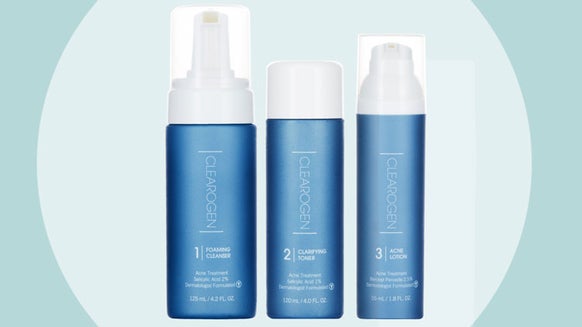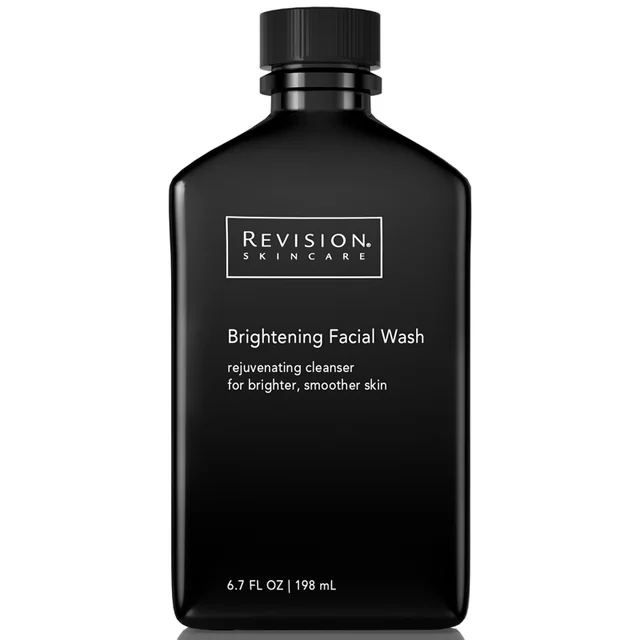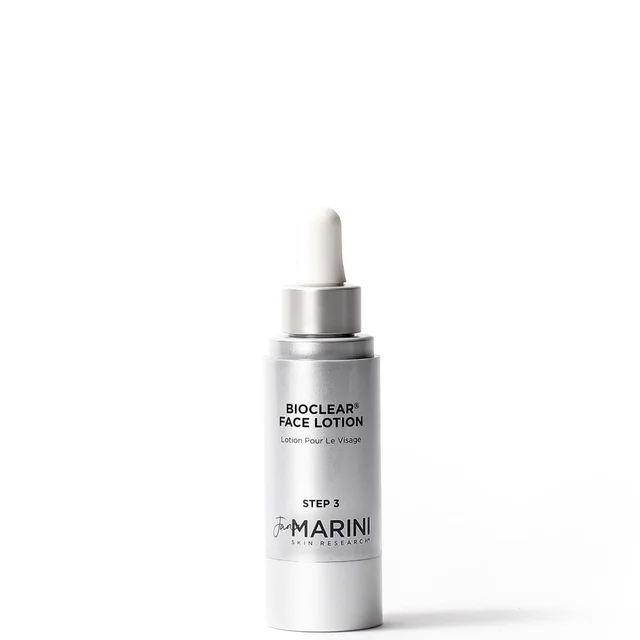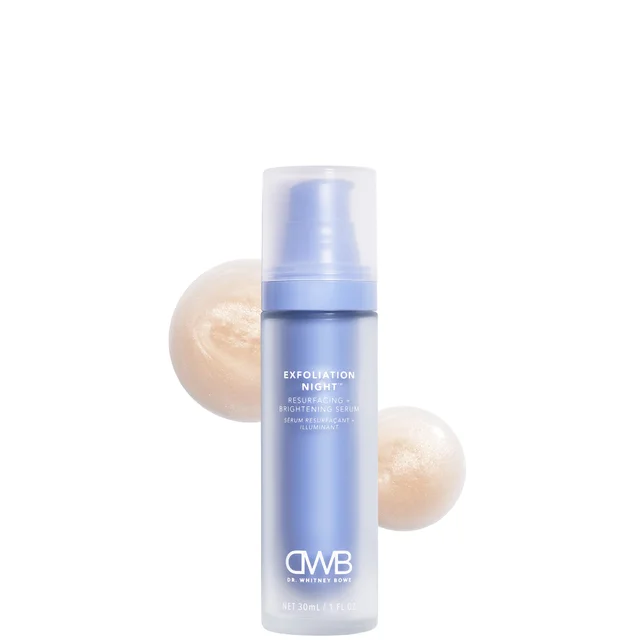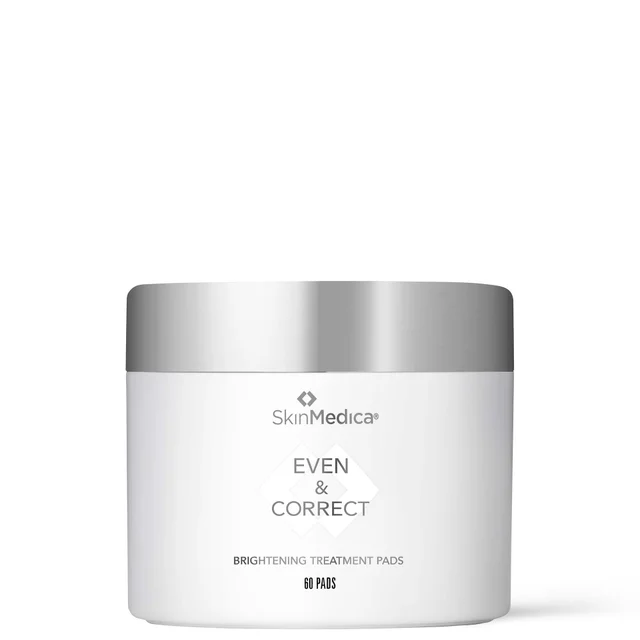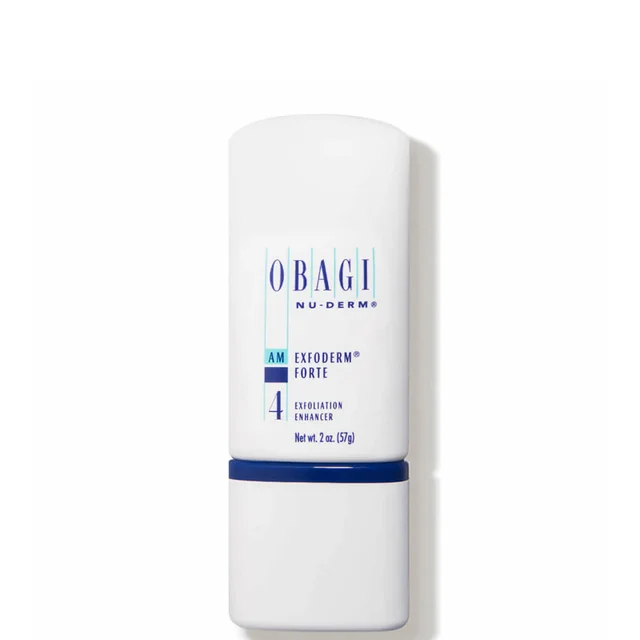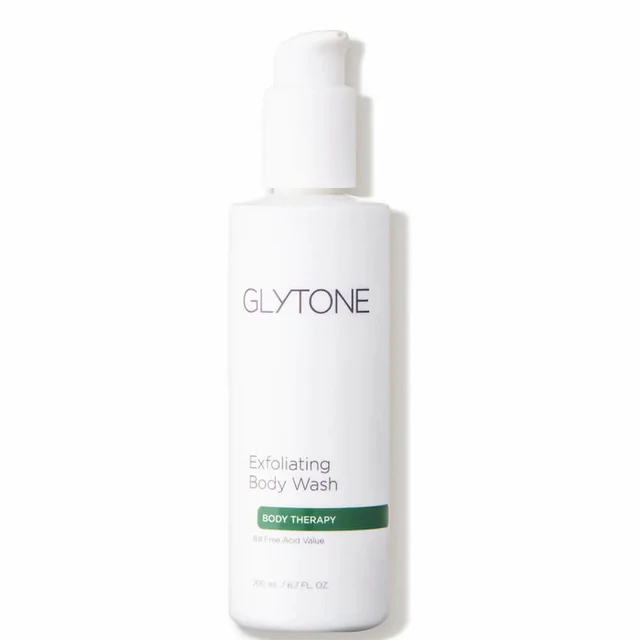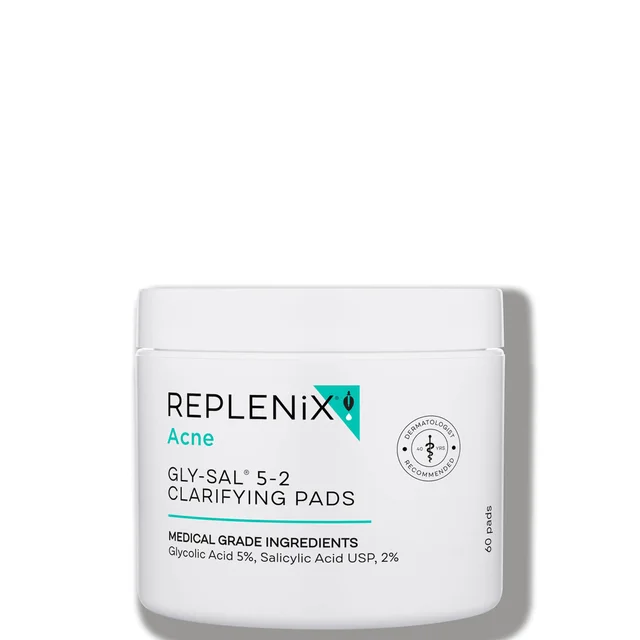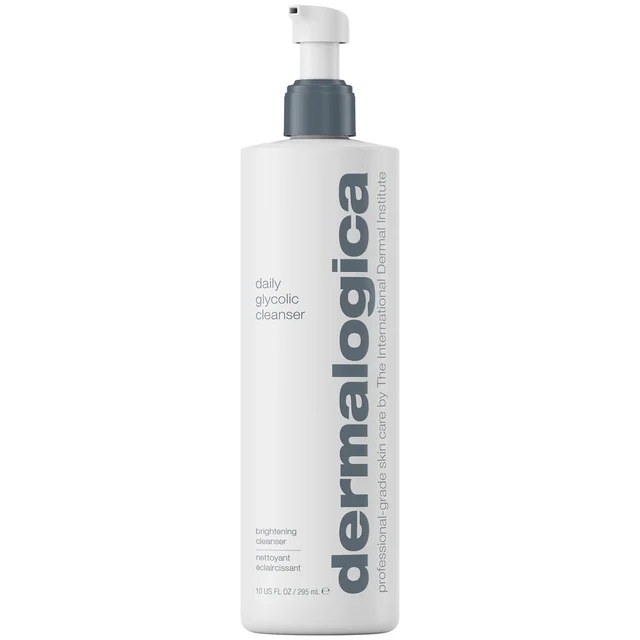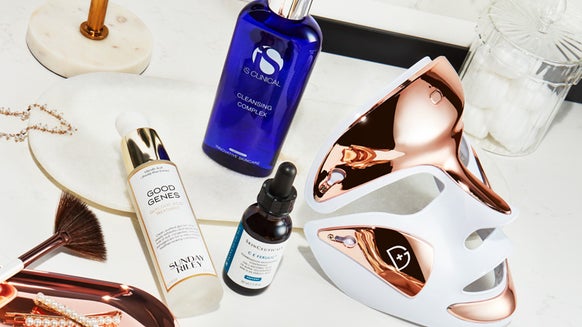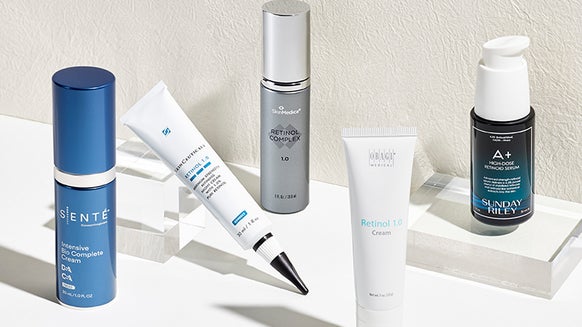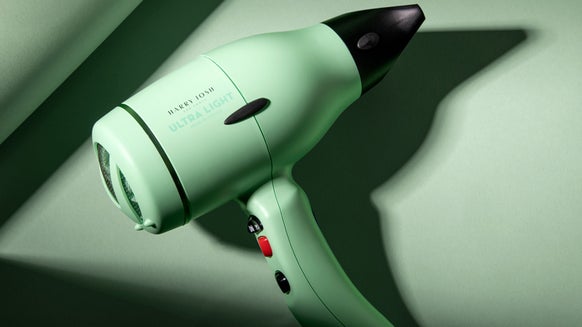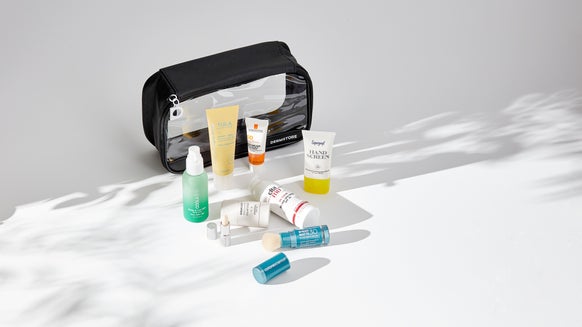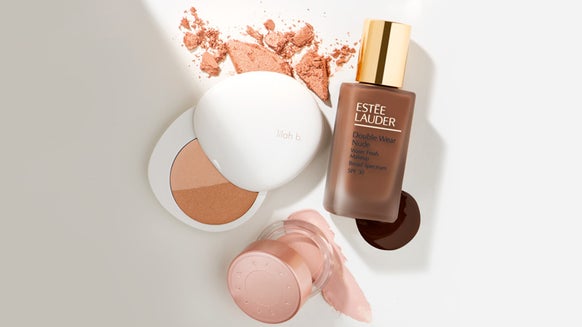Glycolic Acid for Skin: A Derm-Approved Guide to Radiant Skin
Of all the skincare acids that call our medicine cabinets home, glycolic acid is one of the most underrated ones that deserves a home in your skincare routine. Best known for its anti-aging and exfoliating abilities, the benefits of glycolic acid for the skin extend far beyond that—think smoothing, brightening, hydrating, and even stimulating new collagen production. Whether you get your dose of glycolic acid in a nightly cream or via a professional treatment like a chemical peel, the alpha hydroxy acid (AHA) offers many skin-friendly advantages that make it a skincare staple. So, if you haven't already found your favorite skin care product with glycolic acid, consider this your cheat sheet to do so.
Meet the Experts
Dr. Connie Yang – Board-certified dermatologist, fellow of the American Academy of Dermatology, and member of Dermstore’s Medical Advisory Board
In this Article
- What Is Glycolic Acid?
- Benefits of Glycolic Acid
- What Does Glycolic Acid Do for the Skin?
- How to Use Glycolic Acid
- How to Choose a Glycolic Acid Product
- Which Skin Types Should Use Glycolic Acid?
- Skin Care Ingredients to Pair with Glycolic Acid
- Can Glycolic Acid Remove Dark Spots?
- FAQs
- Shop Our Selection of Glycolic Acid Skincare
- The Bottom Line
What Is Glycolic Acid?
According to dermatologist Dr. Connie Yang, glycolic acid is an alpha hydroxy acid (AHA) commonly used in skincare for its exfoliating properties. Derived from sugar cane, beets, and fruits, typically, glycolic acid, in synthetic form, can be found in concentrations between five and 10%, and higher in professional products and treatments. “Glycolic acid can be used to help address hyperpigmentation, fine lines, acne, and uneven skin texture. It works by breaking down the bonds between dead skin cells, promoting cell turnover to reveal fresher smoother skin,” she says.
The different strengths of glycolic acid allow it to be used in various formulations, ranging from leave-on toners to medical-grade peels and almost everything in between. Of all the exfoliating acids out there, the benefits of glycolic acid are said to be suitable for just about every skin type while still packing a powerful punch. Its small molecular makeup allows glycolic acid benefits to run the gamut from exfoliation to improving skin tone and texture and brightening the skin.
Glycolic acid improves the skin by loosening the bonds that hold dead skin cells onto the uppermost layers. Releasing these dead skin cells reveals fresh, new, and healthy skin, improving skin tone and texture.
Related Article:How to Properly Exfoliate Your Skin
Benefits of Glycolic Acid
Glycolic acid can improve the skin in many ways. The most significant benefit of using glycolic acid regularly is that it exfoliates the skin. Removing dead skin cells makes the skin look and feel smoother and brighter.
While exfoliation is a reason why so many people love glycolic acid, another popular benefit of glycolic acid is its ability to simulate collagen production for firmer, pumper, more elastic, and bouncy skin and attracting moisture to the skin, acting as a humectant since glycolic and is tolerated by most skin types, even more sensitive skin.
Unlike other exfoliating acids that can only be used once or twice a week, glycolic acid can be used daily if the concentration is appropriate for your skin type.
The benefits of glycolic acid extend to acneic skin, too. By exfoliating the top layer of skin, glycolic acid can help unclog whiteheads and blackheads to clarify the skin. Plus, it can shrink large pores, making them less noticeable.
Beyond pimples and breakouts, glycolic acid is popular for reducing fine lines and wrinkles, decreasing the visible damage associated with sun-damaged skin, and evening out the skin tone, dark spots, and hyperpigmentation.
There’s also the anti-aging aspect of glycolic acid. Using the acid to aid in exfoliation and shed dead surface skin cells makes the skin look more youthful. With fewer dead skin cells on the skin’s surface, common signs of aging, like fine lines and wrinkles, are diminished.
What Does Glycolic Acid Do for the Skin?
Glycolic acid is a commonly found ingredient in several skincare products. Its small molecular size means it can easily penetrate the skin, which is why it’s considered one of the best skin exfoliators and ingredients for skin renewal.
From a scientific standpoint, glycolic acid improves the skin by exfoliating away the bonds that hold dead skin cells together. Removing this ‘glue’ reveals new skin cells from underneath, leaving the skin looking refreshed and renewed. With fewer dead skin cells, fine lines, wrinkles, discoloration, and sun damage are erased with collagen, elasticity and skin firmness increase. It also helps increase moisture since the skin is less bogged down with dead skin cells.
Dr. Yang says that glycolic acid is suitable for most skin types. “Those with normal or combination skin can benefit from the brightening and texture-refining effects of the acid while oily or acne-prone skin can benefit from its pore clearing properties and reduction of oil buildup. Dry skin can use glycolic acid to help remove dead skin cells and improve moisture retention, but I would recommend using a lower concentration and follow with a good moisturizer.” She adds that mature skin will benefit the most from glycolic acid because cell turnover slows as we age and glycolic acid can help remedy this issue.
Regularly using skincare products with glycolic acid will help promote smoother, more even-looking skin that appears more youthful.
How to Use Glycolic Acid
If you’re considering adding glycolic acid to your skincare routine, here’s how to do it step by step.
- If you are more experienced with the ingredient, you can likely use something stronger.
- Patch test the inner elbow or a small area of your face to ensure the acid is compatible with your skin and doesn’t cause a reaction.
Apply the glycolic acid product to your skin once or twice a week. Gradually increase based on how your skin responds to the ingredient. - Always use glycolic acid at night after cleansing the skin before moisturizing it. Make sure that the skin is bone dry to prevent the acid from penetrating too deeply.
- Make sure to apply sunscreen in the morning. Glycolic acid is an exfoliating acid that can make the skin more susceptible to sun damage.
Avoid using other exfoliants, including retinol and salicylic acid, when using glycolic acid—too many exfoliating products can lead to skin dryness and over-exfoliation.
Once you have built up a tolerance to glycolic acid, it should be safe to use it daily or every other day. But Dr. Yang says this really depends on the concentration of the product. “At lower concentrations of 5 to 10%, I recommend starting out two to three times per week. Those with non-sensitive skin, oily or combination skin, may be able to tolerate daily use, but I recommend working up to that gradually. At higher concentrations of 15%, stick to using glycolic acid once or twice weekly.”
However, sensitive skin types may want to proceed cautiously and use it once or twice weekly to be super careful. Always watch for dryness, irritation, redness, or peeling, which usually signify the skin being over-exfoliated.
How to Choose a Glycolic Acid Product
When it comes to choosing a glycolic acid skincare product, you'll want to select one that is compatible with your skin type and what you want to achieve. Most glycolic acid skincare products list specific benefits, so choose one that focuses on brightening and exfoliating if those are concerns you wish to tackle or one that prevents breakouts if acne is a problem.
The pH level of a glycolic acid skincare product is important, but many consumers don't know to look at it. That's because AHAs, including glycolic acid, must be active to penetrate past the skin's surface, so the lower the pH, the more power the acid must have to penetrate the skin.
Newbies to glycolic acid should always start low and slow—around 5% is a good starting point. From there, as the skin acclimates successfully to the product, you can slowly increase the strength. Depending on skin type, you'll also want to consider a product's formulation. Dr. Yang says if you have dry or sensitive skin, look for products with a lower concentration of 5-10% whereas non-sensitive, oily, or combination skin may be able to tolerate 15% or higher. “However, if you are new to chemical exfoliants, I recommend starting with a lower concentration and working your way up over time.”
Which Skin Types Should Use Glycolic Acid?
The benefits of glycolic acid are safe for all skin types, but if your skin veers more on the dry to normal side with common signs of aging, you may notice more of an improvement in your skin compared to other skin types. Still, glycolic acid can pretty much be used across the board, which is why it is often recommended for oily, breakout-prone, and even sensitive skin.
Skin Care Ingredients to Pair with Glycolic Acid
Plenty of skincare ingredients play well with glycolic acid, and there are a few you’ll want to avoid mixing it with. “Glycolic acid works well with hydrating and soothing ingredients like hyaluronic acid, niacinamide, and ceramides,” says Dr. Yang. To further improve the benefits of glycolic acid, you can combine it with or layer it with other skincare ingredients, such as azelaic acid, to target uneven skin tone, dark spots, and even blemishes, and retinol to treat acne and its lingering scars. Glycolic acid can also be combined with other active ingredients, like salicylic acid and niacinamide, but for some skin types, these pairings can be too harsh on the skin, so make sure they work with your skin first. “Avoid using it with retinoids as this can be too strong and lead to irritation,” Dr. Yang advises.
Can Glycolic Acid Remove Dark Spots?
One of glycolic acid's many benefits is its ability to improve skin tone, specifically dark spots. By exfoliating dead skin cells and those that contain excess pigment from the skin's surface, the acid helps promote skin cell turnover for a brightening effect.
FAQs
Do Dermatologists Recommend Glycolic Acid for the Skin?
Many dermatologists recommend glycolic acid for improving skin tone, texture, and health. “It helps speed up cell turnover and exfoliate the top layer of skin, thus it helps with hyperpigmentation, uneven skin tone, skin texture, and even fine lines,” Dr. Yang shares. Since glycolic acid works for a multitude of skin types and issues, it is a go-to active ingredient in both at-home over-the-counter products and medical-grade ones.
Is it Safe to Use Glycolic Acid Every Day?
Glycolic acid can be used every day if your skin can tolerate it. If you are new to the ingredient, it's best to ease into using it. Apply it to the skin every few days and gradually work your way up from there. Some skin types find that a lower concentration is a safer way to integrate the ingredients into a daily skincare routine.
Keep in mind that glycolic acid can cause irritation and increased sensitivity to the sun, which is why Dr. Yang says it’s very important to use sunscreen daily while using glycolic acid.
Which is Better, Glycolic Acid or Retinol?
Both retinol and glycolic acid offer similar benefits in that they both exfoliate the skin to speed up skin cell turnover for a brightening effect while improving acne breakouts, collagen levels, and overall skin health. It's not that one is better than the other, but rather which one your skin is most compatible with. As Dr. Yang explains, glycolic acid functions differently than retinol, which is why she often recommends incorporating both into a skincare routine. “Glycolic acid will give you quicker results when it comes to skin texture and radiance. Retinol works at a deeper level and more long term to boost collagen production for anti-aging concerns like wrinkles and skin elasticity.”
Should You Moisturize After Applying Glycolic Acid to the Skin?
Moisturizing the skin is an essential part of any skincare routine, especially one that includes glycolic acid. Although the acid has some hydrating properties, it also has exfoliating powers, which can render the skin a little on the dry side or even minimally irritated. It's best to always apply a skin-appropriate moisturizer about 60 seconds after using a product with glycolic acid to reinstate any lost moisture and prevent dryness and irritation.
Shop Our Selection of Glycolic Acid Skincare
1. Revision Skincare Brightening Facial Wash
Loaded with glycolic acid, salicylic acid, vitamins C and E, and lily extract, this brightening and exfoliating cleanser removes every last trace of the day from the skin while leaving it well-hydrated and perfectly prepped for the next steps in your skincare routine. Lifting away dead skin cells from the surface without any abrasive effect makes the skin softer and smoother.
2. Jan Marini Bioglycolic Bioclear Lotion
Perfect for oily and acne-prone skin that needs a little help getting their complexion under control, this unique lotion gently exfoliates the skin while offering the anti-aging benefits of glycolic acid for better-looking skin all around. Start by applying the lightweight exfoliator once per day and gradually increase to twice per day if needed.
3. Dr. Whitney Bowe Beauty Exfoliation Night Resurfacing + Brightening Serum
From the queen of skin cycling herself comes this resurfacing and brightening serum, which aims to smooth the skin, leaving it with a natural radiance. Designed to be used on night one of a skin cycling program, this leave-on vegan treatment relies on a blend of exfoliating acids, including glycolic, lactobionic, gluconolactone, and salicylic acids, to make over dull, lackluster skin. After two weeks, expect softer, smoother skin with improved luminosity.
4. Dr. Dennis Gross Skincare Alpha Beta Extra Strength Daily Peel
If you're looking for a tried-and-true way to get clear, glowy skin, look no further than this cult-classic at-home two-step peel treatment that refines the pores and rejuvenates the skin. Sweep the step one pad across the skin to exfoliate dead skin cells and tone the skin, and then the step two pad helps smooth wrinkles and lines and increase moisture. A unique blend of seven alpha beta acids, chamomile, retinol, and green tea extract work their magic for accelerated results.
5. SkinMedica Even and Correct Brightening Treatment Pads
Brighten dark spots and uneven skin tone with these alcohol-free daily-use pads. They contain glycolic acid to gently exfoliate the skin and an ultra-concentrated mixture of lotus seed extract, tranexamic acid, and niacinamide. This safe-for-all-skin treatment helps improve the look of hyperpigmentation and dark spots while preventing new discoloration from forming.
6. SkinMedica AHA/BHA Exfoliating Cleanser
Not all exfoliators need to be harsh or strip the skin, as this AHA-meets-BHA formulation proves. Super gentle yet still effective, this cleanser whisks away dead skin cells and pore-clogging impurities while also soothing inflammation, thanks to lavender extract.
7. Obagi Medical Nu-Derm Exfoderm Forte
If glycolic acid isn't yet a part of your skincare routine for its anti-aging benefits, then this advanced exfoliating lotion is one you'll want to add to your cart. Packed with glycolic and lactic acids, which exfoliate while diminishing signs of hyperpigmentation and promoting new skin cell growth, it also contains glycerin for much-needed moisture.
8. Glytone Exfoliating Body Wash
One of the most underrated benefits of glycolic acid is its ability to smooth rough skin, which is why it often appears in body washes and lotions. This exfoliating body wash cleanses the skin while softening it with 8.8% glycolic acid. Removing dead skin cells from the body reveals new, fresh skin that's soft, smooth, bright, and healthy.
9. Replenix Gly-Sal 5-2 Pads
Treating acne, especially adult acne, can seem like an uphill battle, but if your routine includes the right topical products, watch your pimples disappear. Featuring a unique combination of 5% pure glycolic acid and 2% salicylic acid, these gentle treatment pads clear out clogged pores to reduce breakouts and improve the skin's tone for healthy-looking skin.
10. Dermalogica Daily Glycolic Cleanser
Gentle enough for daily use, this skin-brightening, AHA-rich jelly cleanser is like a vacuum for congested skin, helping to break down buildup on the skin so it looks clean, clear, and luminous. Glycolic acid is the hero ingredient here, going hard to work to exfoliate and brighten, while calendula and allantoin provide antioxidant benefits, and jojoba seed oil softens and helps restore the skin's moisture barrier.
The Bottom Line
If your skincare routine needs an upgrade, don’t gloss over the benefits of glycolic acid, especially if you’re looking for a well-known ingredient that can renew and rejuvenate the skin to leave it brighter, more radiant, and healthier. With various formulations to choose from, the more frequently you use skincare products with glycolic acid, the brighter it will look, along with smaller pores, fewer breakouts, and a softer, smoother, more glowy complexion.

Elise Minton Tabin is an award-winning beauty journalist, editor, and beauty expert with more than 16 years of experience. She previously held the title of Executive Beauty Editor at NewBeauty magazine, where she reported on beauty, plastic surgery, anti-aging, health and wellness. She was also instrumental in the launch of the beauty supplement brand Hush & Hush. A self-professed beauty junkie and retinol and sunscreen pusher, Elise knows what’s new, what works and who’s the best to go for every procedure under the sun. Follow Elise on Facebook, Instagram, and on her beauty blog, elisetabin.com
Related Posts
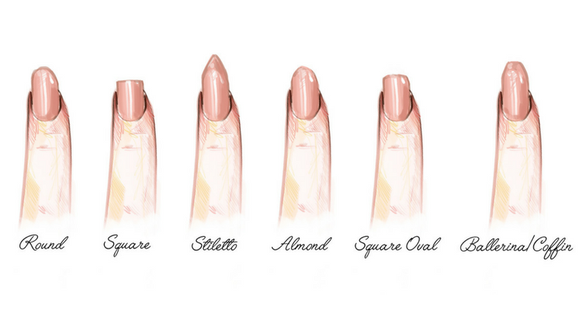
Nail Expert Jenna Hipp Explains How to Create Different Nail Shapes at Home
